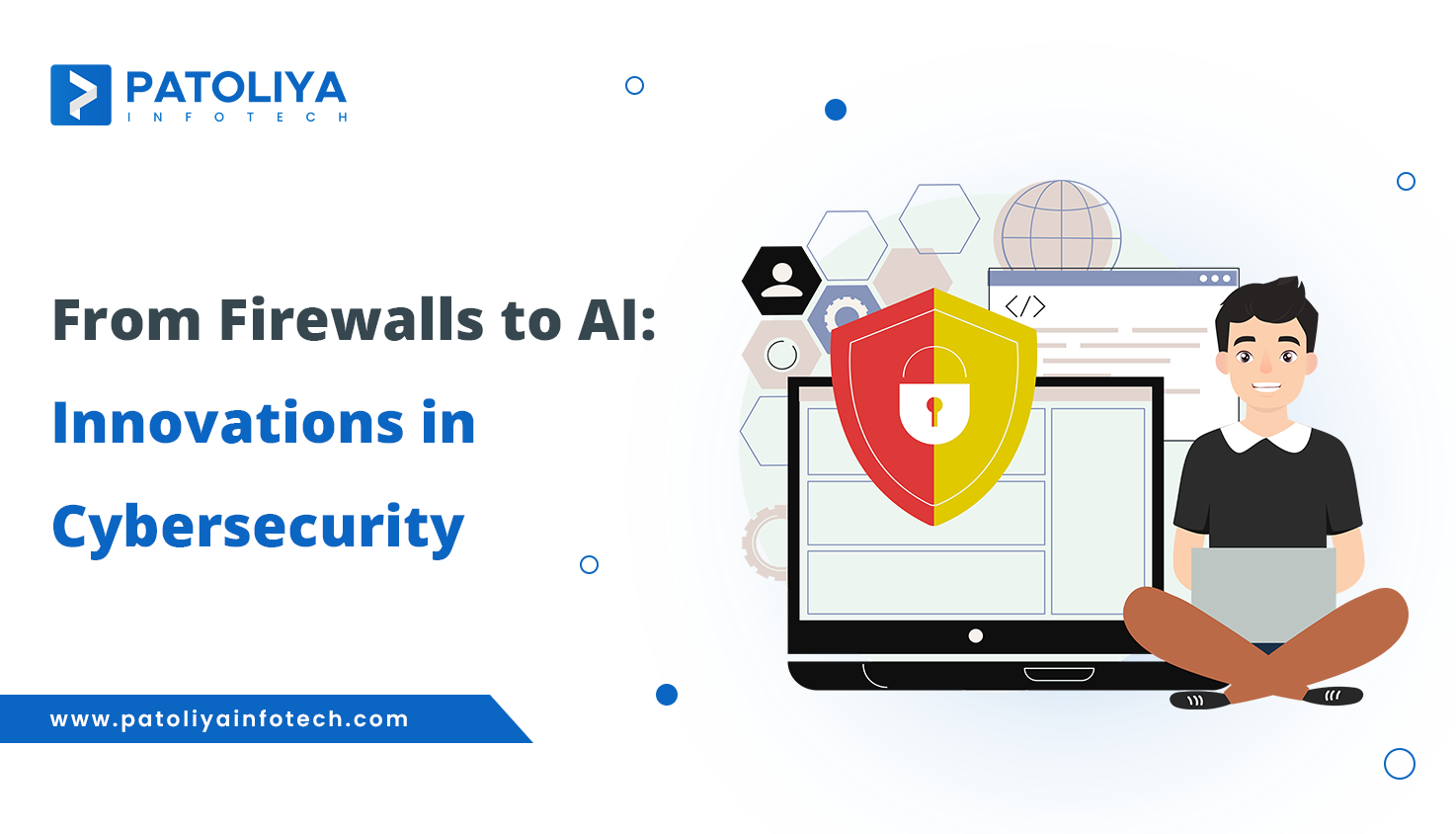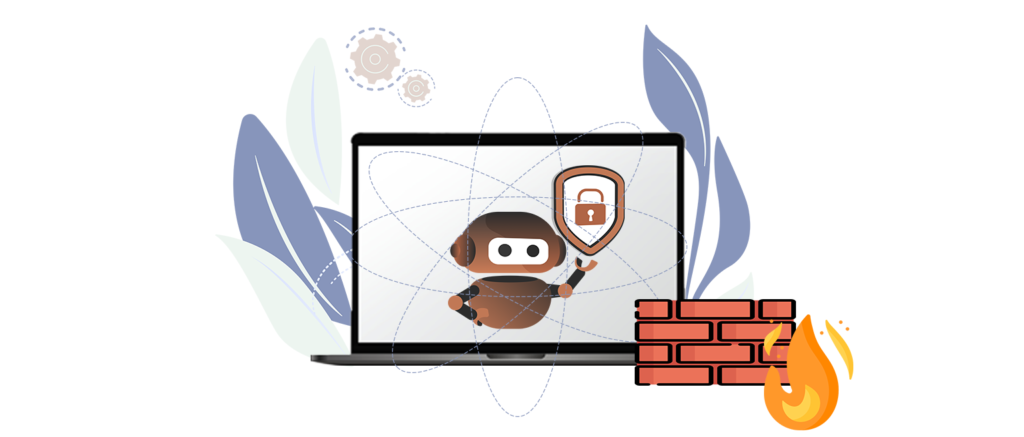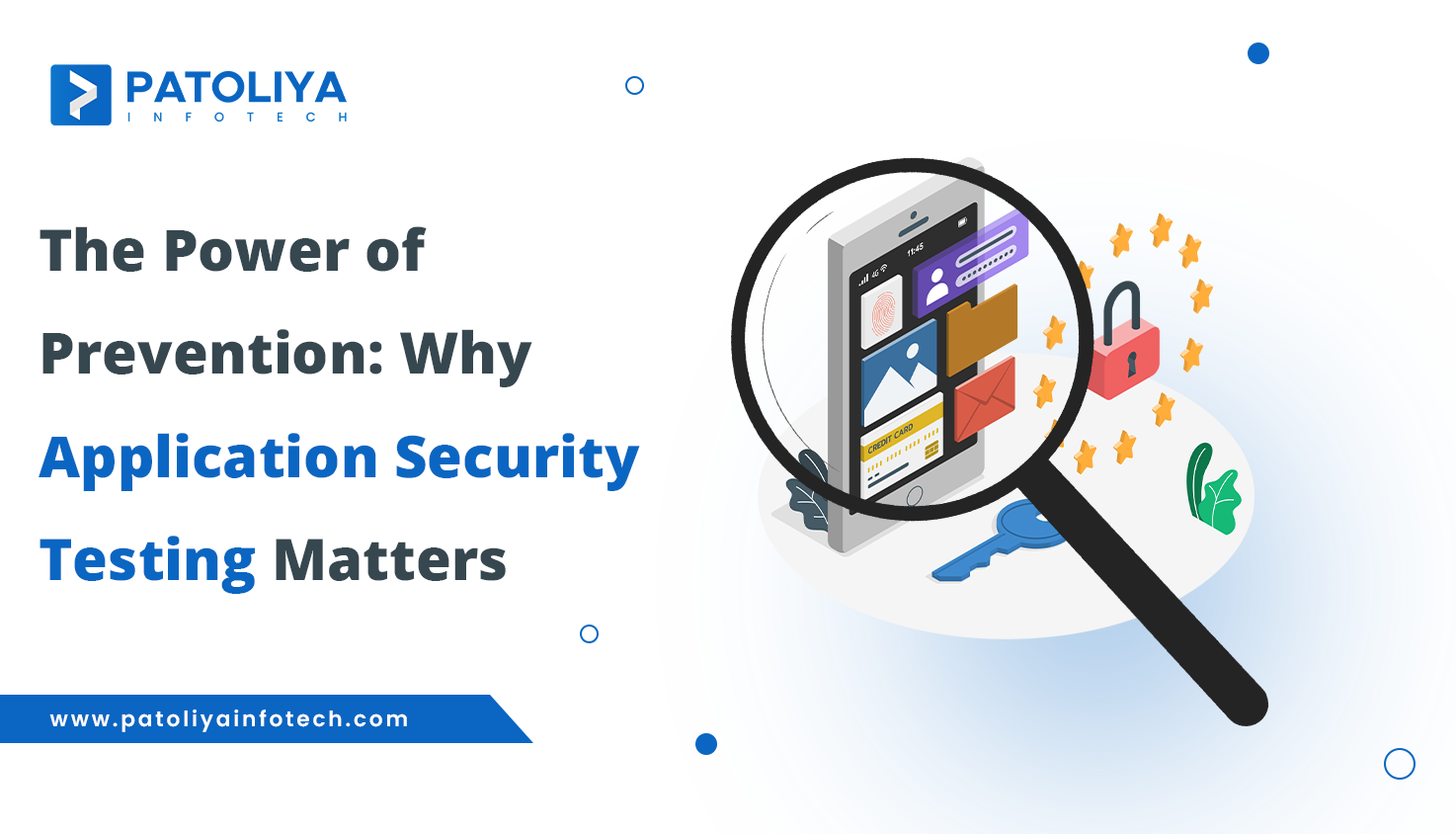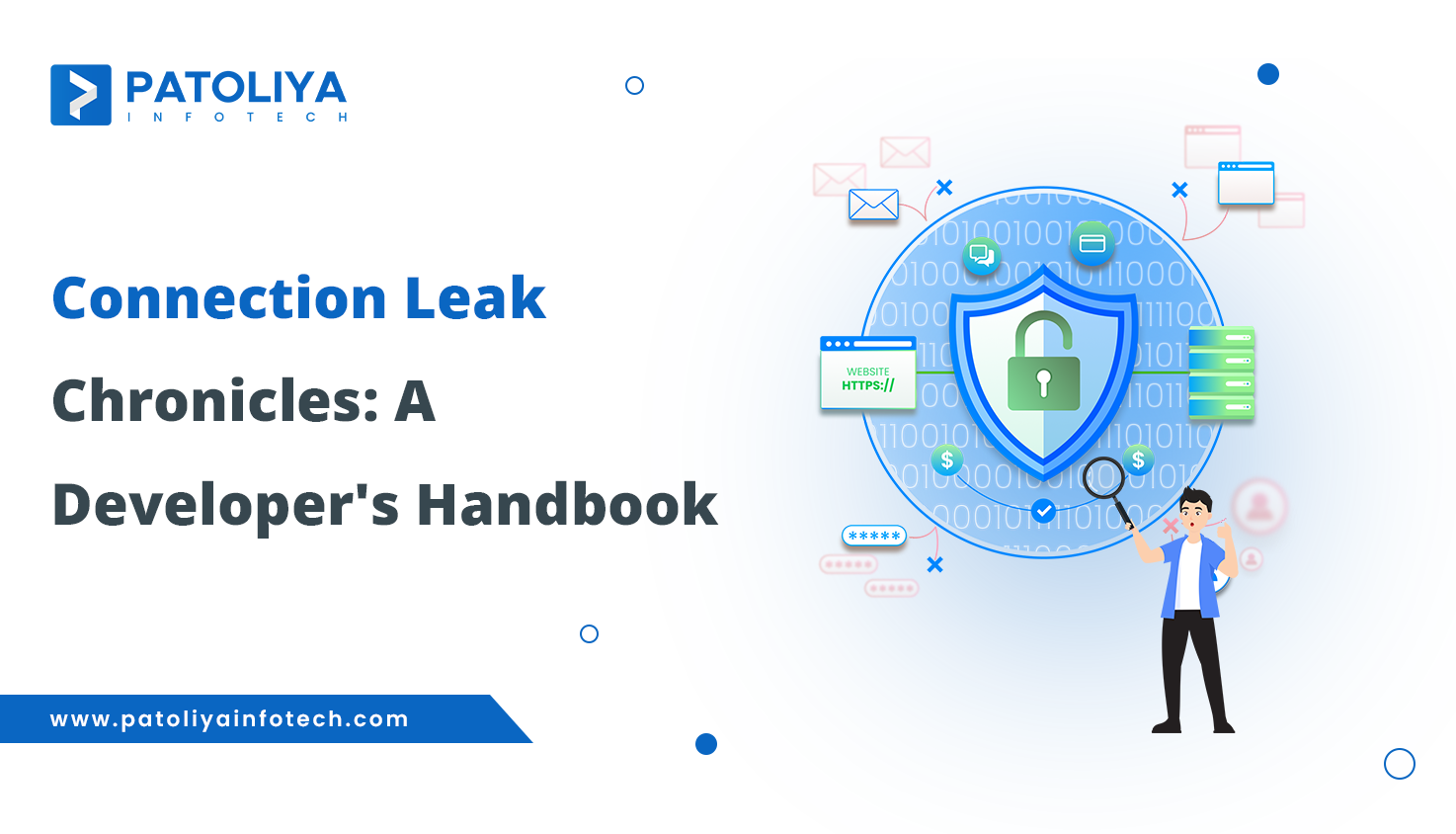From Firewalls to AI: Innovations in Cybersecurity

Table of Contents
Cybersecurity, an ever-evolving field, has traversed a remarkable journey from its infancy to the complex ecosystem it is today. In the early days of networked computing, the realization of safeguarding digital assets dawned as the networks grew, exposing vulnerabilities that demanded protection. This necessity spawned a progression in defence mechanisms, leading to pivotal innovations aimed at fortifying the digital realm.
At the genesis of cybersecurity, the concept was nascent, emerging alongside the expansion of digital networks. With this expansion came an amplified awareness of the susceptibility to threats, propelling the development of sophisticated protective measures.
The advent of firewalls is among the transformative milestones in the evolution of cybersecurity in cyber security. These technological bastions emerged as fundamental shields fortifying network security. By delineating a barrier between internal networks and external threats, firewalls assumed the crucial role of regulating traffic and thwarting unauthorized access.
The journey of cybersecurity and its development chronicles an intricate evolution shaped by the persistent quest to fortify digital landscapes against an ever-evolving array of threats. From its embryonic stages to present-day complexity, the change reflects an ongoing pursuit of innovation and resilience in the face of a dynamic digital frontier.
The Role of Firewalls in Cybersecurity
Firewalls stand as the digital guardians of our interconnected world, working tirelessly behind the scenes to fortify our networks against the constant barrage of cyber threats. Understanding these silent protectors unveils their pivotal role in securing the digital realm.
At their core, firewalls are the gatekeepers of network traffic. Picture them as vigilant sentinels meticulously scrutinizing each incoming and outgoing data packet, assessing its legitimacy against predefined security rules. Their duty is clear-cut yet complex: to discern whether to permit or deny entry to these data packets based on established criteria.
Diving deeper, the world of firewalls isn't uniform; it's a landscape filled with diverse types tailored to meet specific security needs and network architectures. The array includes:
- Packet-filtering firewalls, which inspect data packets based on predetermined rules.
- Stateful inspection firewalls that track the state of active connections.
- Proxy firewalls act as intermediaries between users and external networks.
- Cutting-edge next-generation firewalls are integrating advanced features for enhanced protection.
Each type brings its strengths, catering to the intricate security demands of modern networks.
Why do these digital gatekeepers hold such significance in network security? The answer lies in their multifaceted role. Firewalls act as the first line of defence, a crucial barrier against unauthorized access attempts. They serve as the vanguards, tirelessly mitigating the risk of cyber incursions that could compromise sensitive data and disrupt operations.
Their role extends beyond blocking or allowing traffic; they contribute significantly to risk reduction. By filtering out potentially harmful data packets and thwarting malicious attempts, firewalls help to lower the susceptibility to cyber threats. Their vigilance is foundational in creating a robust security posture, shielding networks from intrusions and potential breaches.
Innovations in Cybersecurity Beyond Firewalls
The bond between Artificial Intelligence (AI) and cybersecurity marks a transformative phase in digital defence. Recent technological strides have ushered in a new era where AI and its subset, Machine Learning (ML), play pivotal roles in fortifying cybersecurity frameworks. This integration of intelligence isn't just a buzzword; it's a profound enhancement that arms systems with the capability to learn, adapt, and anticipate threats in ways previously unattainable.

At its core, AI acts as a force multiplier for security protocols. By leveraging ML algorithms, cybersecurity systems gain the remarkable ability to assimilate knowledge from patterns ingrained within massive data sets. This learning capability empowers these systems to discern anomalies, detect deviations in network behaviour, and swiftly identify potential threats.
The applications of Machine Learning in bolstering cyber defences are multifaceted. These intelligent algorithms equip security systems with autonomous decision-making capabilities to identify and respond to suspicious activities swiftly. Whether recognizing unusual patterns within network traffic or detecting anomalies indicative of a cyber threat, ML is an invaluable tool in fortifying the defensive capabilities of cybersecurity frameworks.
The fusion of AI and cybersecurity extends beyond mere pattern recognition. The utilization of threat intelligence and predictive analysis stands as a testament to the proactive stance adopted by organizations. By harnessing AI's predictive prowess, cybersecurity measures pivot from reactive to aggressive, allowing preemptive identification and mitigation of potential threats before they materialize.
The integration of cybersecurity and AI signifies a fundamental change in defensive tactics. It's not solely about reacting to known threats but anticipating and neutralizing potential risks. The synergy between intelligent technologies and cybersecurity heralds a new era where the digital landscape becomes less vulnerable, more resilient, and increasingly adept at outmanoeuvring the ever-evolving array of cyber threats. AI isn't just a tool; it's an indispensable asset fortifying our digital fortresses, empowering us to navigate the cyber terrain with greater confidence and security.
Challenges and Benefits of AI-Driven Cybersecurity
Employing Artificial Intelligence (AI) as a linchpin in cybersecurity strategies unveils a host of advantages, yet it also unfurls a tapestry of challenges. While the integration of AI fortifies defence mechanisms, it casts a spotlight on critical areas that necessitate ongoing vigilance and attention.
The foremost advantage of AI-driven cybersecurity lies in its prowess to revolutionize threat detection and response. Organisations gain a distinct edge in swiftly identifying and neutralizing emerging threats by infusing AI capabilities into security frameworks. This technological synergy enables proactive measures, enhancing the agility of responses and bolstering the resilience of defence mechanisms.

However, amid the promising advancements, inherent challenges persist. Ethical considerations loom, demanding thoughtful scrutiny in deploying AI within cybersecurity frameworks. The moral problem surrounding AI's application in security protocols requires a delicate balance to ensure its utilization upholds privacy rights and doesn't inadvertently perpetuate biases or ethical dilemmas. Safeguarding data privacy stands paramount, necessitating stringent measures to prevent unauthorized access or misuse of sensitive information.
The potential for adversaries to exploit AI-powered systems amplifies the need for continuous monitoring and robust defences. Cybercriminals might seek to manipulate AI algorithms or introduce adversarial attacks, exploiting vulnerabilities within these intelligent systems for nefarious purposes. This underscores the imperative for ongoing research and development to fortify AI-driven cybersecurity against potential exploitations and threats posed by malicious actors.
Addressing these challenges demands a holistic approach that intertwines technological advancements with ethical considerations. Ensuring that AI's integration in cybersecurity amplifies defence capabilities, adheres to ethical guidelines, and safeguards privacy rights remains an ongoing endeavour. It requires a multidimensional strategy encompassing stringent regulations, continuous monitoring, and the cultivation of moral frameworks that underpin the responsible use of AI in safeguarding digital landscapes.
The journey toward harnessing AI's potential in cybersecurity is not solely about innovation; it's a symbiotic relationship between technological prowess and ethical responsibility. Balancing these facets fosters a cybersecurity ecosystem where the advantages of AI are maximized while ensuring that integrity, privacy, and ethical considerations remain at the forefront of defence strategies.
Future Trends in Cybersecurity Innovation
The rise of quantum computing brings both exciting possibilities and formidable challenges for keeping our digital world safe. We need new ways to protect our information as these super-powerful computers could crack current security methods. Also Witness first hand how AI and IT services are reshaping entire industries, driving them towards a future bursting with innovation and unlimited potential. Don't miss out—explore and be part of the change today!
Scientists are working on special encryption and security codes that can resist attacks from quantum computers. These new codes, known as quantum-resistant encryption, will help keep our sensitive data safe even with the advent of these super-fast computers.
With more and more devices connecting to the internet (like intelligent gadgets), we must ensure they're all secure. Developing better ways to protect these connected devices is crucial to making our overall digital world safer from hackers.
Countries and organizations worldwide need to team up to tackle these significant challenges. By working together and creating shared plans, we can fight cyber threats that don't care about borders. This way, we can better protect our digital world globally.
In short, we're working on new security methods to keep our information safe from super-fast computers and to protect all the devices connected to the internet. By joining forces globally, we stand a better chance against these cyber threats.
Wrap Up
Keeping our digital stuff safe, things have come a long way. Back when computers started talking to each other, folks realized they needed to protect what they were saying. That's when they built firewalls, which acted like guards to stop bad stuff from getting into computer networks.
Now, we've got even more innovative tools. Think of machines that learn from what's happening in our digital world, like how we learn from our experiences. These new tools, powered by Artificial Intelligence (AI), help us spot trouble before it causes harm. But there are some challenges, too. We must ensure these innovative tools play fair and don't violate people's privacy. Plus, we're figuring out how to protect our digital stuff from potent computers that could break through our current protections.
We're teaming up globally to keep our digital world safe. It's like ensuring everyone works together to protect everyone's stuff, no matter where they are. By combining our smarts and working, we can ensure our digital world stays safer from all the wrong things.



